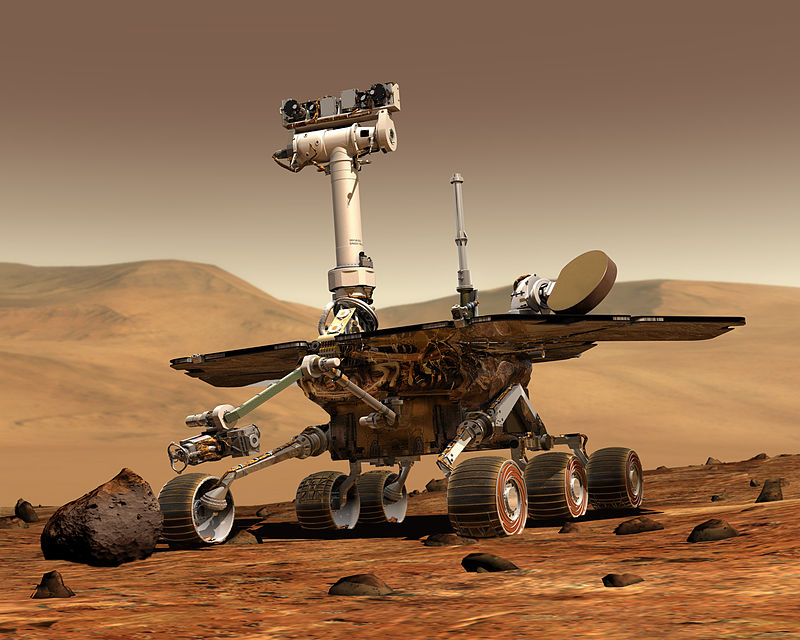
NASA’s Mars Exploration Rover Mission (MER) is an ongoing robotic space mission involving two rovers, Spirit and Opportunity, exploring the planet Mars. It began in 2003 with the sending of the two rovers—MER-A Spirit and MER-B Opportunity—to explore the Martian surface and geology.
The mission’s scientific objective was to search for and characterize a wide range of rocks and soils that hold clues to past water activity on Mars. The mission is part of NASA’s Mars Exploration Program, which includes three previous successful landers: the two Viking program landers in 1976 and Mars Pathfinder probe in 1997.
The total cost of building, launching, landing and operating the rovers on the surface for the initial 90-Martian-day (sol) primary mission was US$820 million. Since the rovers have continued to function beyond their initial 90 sol primary mission, they have each received five mission extensions. The fifth mission extension was granted in October 2007, and ran to the end of 2009. The total cost of the first four mission extensions was $104 million, and the fifth mission extension is expected to cost at least $20 million.
In July 2007, during the fourth mission extension, Martian dust storms blocked sunlight to the rovers and threatened the ability of the craft to gather energy through their solar panels, causing engineers to fear that one or both of them might be permanently disabled. However, the dust storms lifted, allowing them to resume operations.
On May 1, 2009, during its fifth mission extension, Spirit became stuck in soft soil on Mars. After nearly nine months of attempts to get the rover back on track, including using test rovers on Earth, NASA announced on January 26, 2010 that Spirit was being retasked as a stationary science platform. This mode would enable Spirit to assist scientists in ways that a mobile platform could not, such as detecting “wobbles” in the planet’s rotation that would indicate a liquid core. Jet Propulsion Laboratory (JPL) lost contact with Spirit after last hearing from the rover on March 22, 2010 and continued attempts to regain communications lasted until May 25, 2011, bringing the elapsed mission time to 6 years 2 months 19 days, or over 25 times the original planned mission duration.
In recognition of the vast amount of scientific information amassed by both rovers, two asteroids have been named in their honor: 37452 Spirit and 39382 Opportunity. The mission is managed for NASA by the Jet Propulsion Laboratory, which designed, built, and is operating the rovers.
On January 24, 2014, NASA reported that current studies by the Curiosity and Opportunity rovers will now be searching for evidence of ancient life, including a biosphere based on autotrophic, chemotrophic and/or chemolithoautotrophic microorganisms, as well as ancient water, including fluvio-lacustrine environments (plains related to ancient rivers or lakes) that may have been habitable. The search for evidence of habitability, taphonomy (related to fossils), and organic carbon on the planet Mars is now a primary NASA objective.